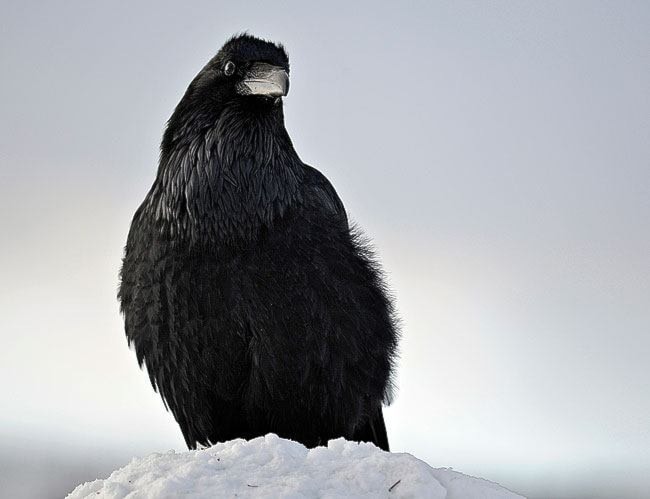They might have bird brains but ravens may be even smarter than previously thought.
A new study by German scientists has found the big, black birds so common in the Yukon use gestures and objects to communicate.
This type of communication is similar to what children do between the ages of nine to 12 months, said Simone Pika, co-author of the study and the leader of the Humboldt Research Group at the Max Plank Institute for Ornithology
“It has never been observed before,” she said in a telephone interview from Germany. “That’s the amazing thing about this study.”
The only other animals which have been observed exhibiting this type of behaviour are great apes.
While much of Pika’s research has focused on apes, she has also had a fascination with ravens ever since she was a teenager and read the seminal work, Mind of the Raven.
A few years ago, while she was doing postdoctoral work at the University of St. Andrews, she met Thomas Bugnyar.
Bugnyar was lecturing at the university and researching the cognitive abilities of ravens.
“When you talk to him, he gets really excited,” said Pika. “He’s just so into his ravens.”
When she asked him if ravens communicated through gestures, he was taken aback.
“He looked at me as if I was from a different star and had just asked really a weird question,” said Pika.
Initially he told her they didn’t gesture, but two days later he came back and asked her to take a look at some new data.
“I looked at it and I said, ‘Wow I think these are clearly gestures,’” she said.
That was the start of their collaboration.
For three summers Bugnyar and Pika observed ravens at the Cumberland Wild Park in Austria.
“We found two behaviours in ravens that qualify as gestures,” said Pika.
They were seen using didactic gestures, which is communication between two individuals such as pointing at or holding up objects.
But they were also observed employing triadic gestures - the use of an object to reference something else. For instance, ravens presented moss, twigs and other items of “no apparent value” to one another. said Pika.
Before this study, that kind of communication was thought to be exclusive to primates.
Though it shouldn’t be too surprising, it’s long been known that ravens are as smart as apes.
“There has been a lot of research already showing that ravens compete with non-human primates, and even rival them in many domains, like using tools,” said Pika.
Also ravens, like many apes, live in large, very complex social systems.
“These groups split up and they meet again so they have to engage everyday with different individuals and have to keep in mind who is friends with whom and who is collaborating with whom,” said Pika. “I think this then results in quite complex social abilities.”
Much of the gesturing that they observed was between members of the opposite sex.
“What we think is maybe these signals are used to test if another partner might be interested in a social interaction,” said Pika.
Their other theory is that it’s a way for couples that have already paired off to strengthen their bond before they leave the group to build a territory of their own.
“It could be that gestures are used to really attune the relationship,” she said. “Ravens invest a lot of time in finding the right partner because when they have found the right partner they stay together and build monogamous pairs.”
But that doesn’t mean that these gestures are all about courtship.
The observations were made between June and August - outside of the breading season - and unlike ritualized mating dances, these gestures are flexible, said Pika.
“The gestures are adjusted to the attention of the recipient and the social situation,” she said.
The study has generated a lot of interest.
Since it came out, she has received emails from all over the world from people who claim to have observed similar behaviour in everything from cockatoos to horses.
One little girl in Russia said she thinks he’s seen her goldfish gesturing.
While this is the first time that this kind of behaviour has been observed in anything other than a primate, Pika doesn’t think it will be the last time.
And that kind of research could have larger implications.
By looking at communication systems in animals other than primates, it may help us understand the very origins of human language, she said.
Contact Josh Kerr at
joshk@yukon-news.com
